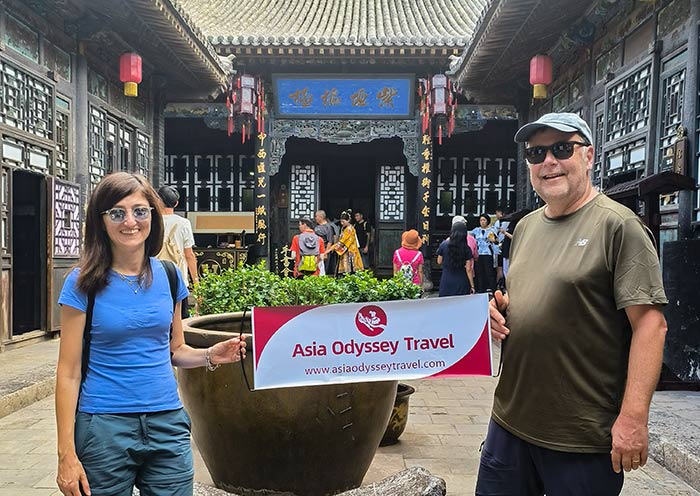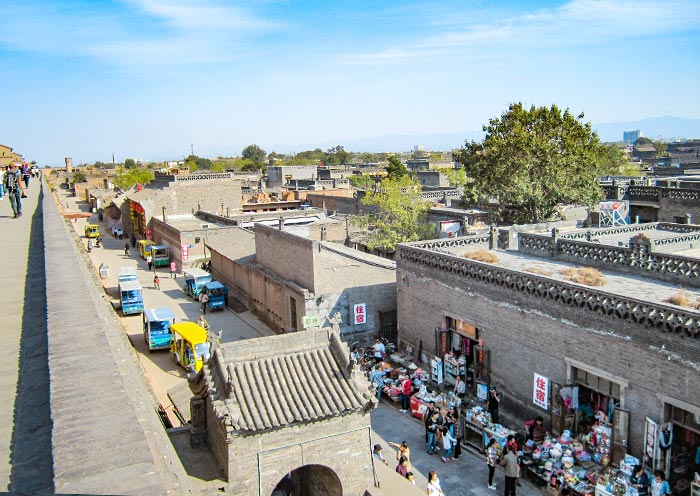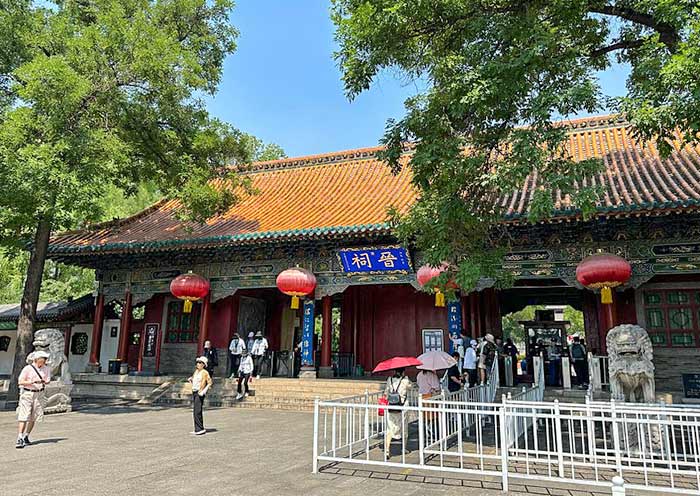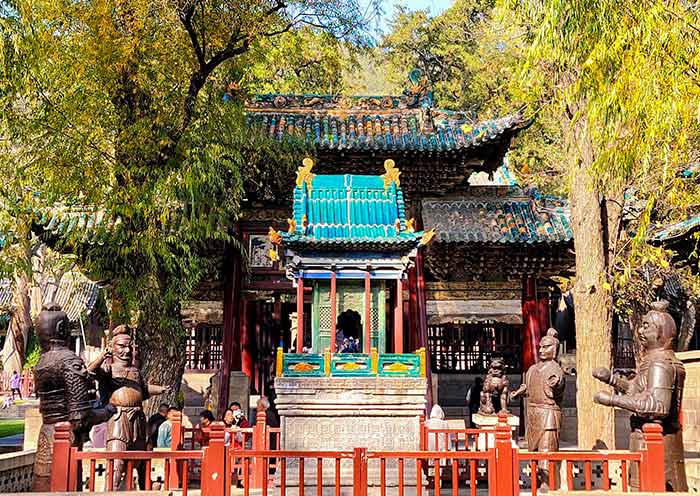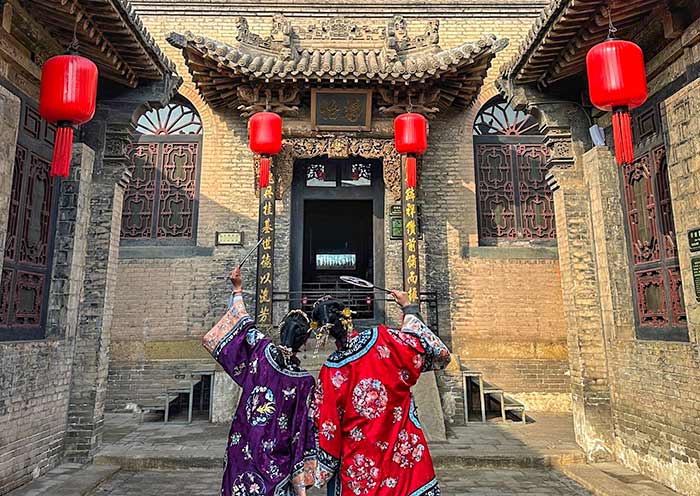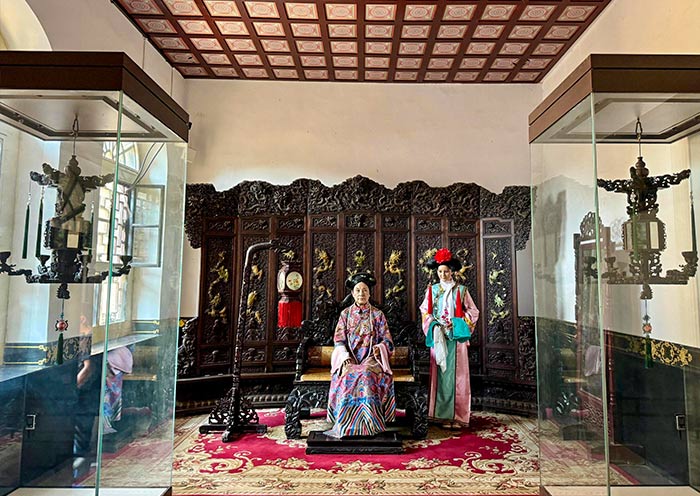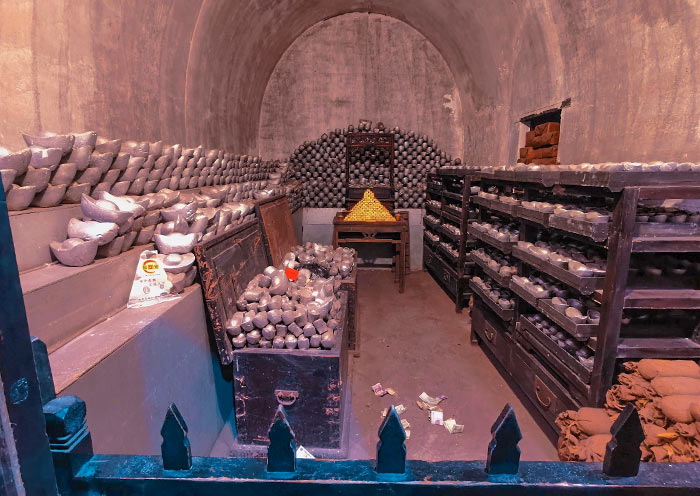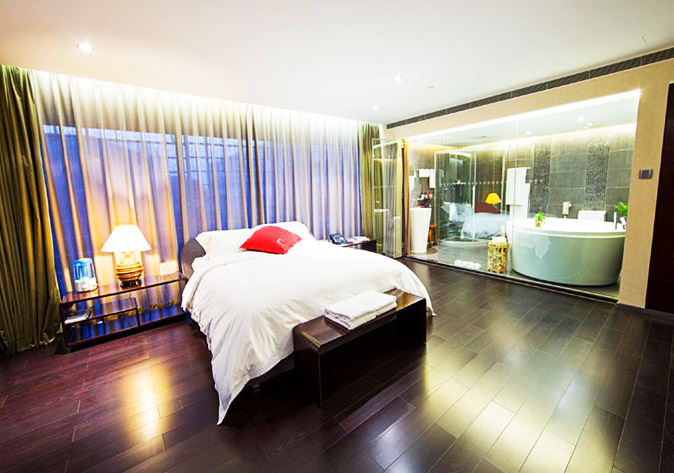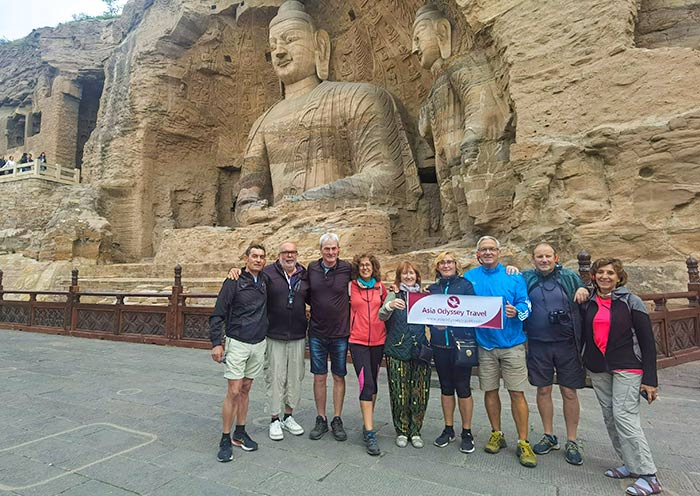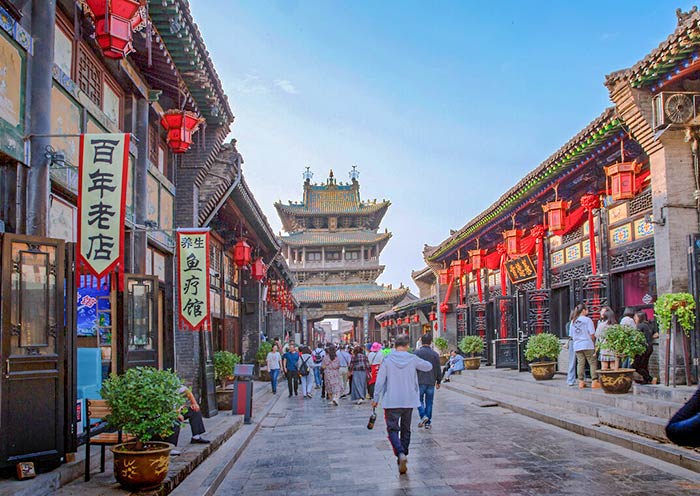Welcome to Taiyuan, the city most adept at consuming vinegar & the biggist city in Shanxi. Upon arrival this morning, your guide will meet you and escort you to Jinci Temple before head to Qiao Family Compound, then reach Pingyao for overnight. It is about 80 km from Taiyuan to Pingyao.
Taiyuan, the capital city of Shanxi province, has over 2,500 years of city-building history and is an important historical and cultural city in northern China. Taiyuan's vinegar culture, noodle culture, and more are unique cultural symbols of the city. You can taste authentic Shanxi noodles and vinegar-based delicacies in Taiyuan, such as knife-cut noodles, ear-shaped noodles, fried millet noodles, and more. As a transportation hub of Shanxi Province, Taiyuan has a well-developed transportation network, with easy access to and from the city.
You may have seen the movie "Detective Dee and the Mystery of the Phantom Flame《狄仁杰之通天帝国》", which gives you some insight into Detective Dee (狄仁杰) who was a famous politician (during the period of Empress Wu Zetian武则天) and detective in the Tang Dynasty. Detective Dee’s hometown is in Taiyuan, and today, there is a street related to Detective Dee in Taiyuan called Dilian Palace Street狄梁公街 (Digongci Street狄公祠街). His former residence is located in the Xiaodian District of Taiyuan, carrying the life and deeds of Detective Dee.
In the morning, you can hike 1 km through Jinci Park (sightseeing bus; Self-pay) to reach Jinci Temple to get close to the relics remaining by time. Jinci is not only the earliest and largest imperial sacrificial classical garden in China, but also the only existing imperial ancestral temple, and a national first-class museum, renowned as the Museum of Ancient Chinese Architecture. At Jinci, you can see ancient buildings from the Tang, Song, Yuan, Ming, and Qing dynasties coexist in harmony with the 3,000 years old tree from the Zhou Dynasty, with over a hundred structures such as halls, pavilions, towers, pavilions, platforms, bridges, and belvederes, blending ancient architectural art and garden aesthetics.
"Not visiting Jinci is a wasted trip to Taiyuan." Jinci, the only temple named after a state, was built to commemorate Tang Shuyu (唐叔虞), the founding ancestor of the Jin state (晋国). Tang Shuyu, the brother of Emperor Zhou Chengwang (周成王) of the Western Zhou Dynasty, was enfeoffed in Tang (剪桐封弟), and his son Xie (燮) later changed the state name from Tang to Jin, becoming one of the Five Hegemons of the Spring and Autumn Period (770 BC - 476 BC). Tang Shuyu's father was the renowned Emperor Zhou Wuwang (周武王) of the Zhou Dynasty. Today, the main hall of Jinci, the Hall of the Holy Mother, commemorates Tang Shuyu's mother, Yi Jiang (邑姜), who was also the queen of Emperor Zhou Wuwang & the daughter of Jiang Ziya (姜子牙).
When visiting Jinci, you cannot miss its "Three Uniques三绝," "Three Treasures三宝," and "Three Plaques三匾." The "Three Uniques" refer to the cypress tree from the Zhou Dynasty (3,000 years old)周柏, the Song Dynasty colored sculptures in the Hall of the Holy Mother (over 1,000 years old)圣母殿宋代彩塑, and the Nanyao Spring (the source of Jinci's water)难老泉. The "Three Treasures" include the Fish Pond Flying Bridge (China's earliest water-land interchange bridge)鱼沼飞梁, the Xian Hall献殿, and the Hall of the Holy Mother (dedicated to Yi Jiang)圣母殿. The "Three Plaques" are the Shuijingtai, Duiyue, and Nanyao (水镜台、对越、难老). You will notice that the highlights of Jinci are mostly aligned along irregular axes, allowing you to experience the sense of order crafted by ancient artisans in a limited space, and the deep romantic ambiance of Chinese classical gardens.
Upon entering Jinci, you will see the Shuijingtai水镜台, a building famous for being the prototype of the small temple transformed in the 1961 animated film "Havoc in Heaven大闹天宫" where Sun Wukong and Erlang Shen compete. At the Jinrentai金人台, you can admire the iron figures representing the highest level of iron casting technology in the Song Dynasty, and perhaps spot one of the figures recast in 1913. In the Xian Hall献殿, you can experience Jin Dynasty architecture (over 800 years old), where offerings were displayed during sacrifices, uniquely combining a hall and a pavilion. Its wooden structure makes it bear weight on beams instead of walls, surrounded by lattice walls for ventilation, resembling an ancient refrigerator. Walking on the Fish Pond Flying Bridge is like walking on one of China's earliest cross-shaped ancient bridges (1,500 years old). In the Hall of the Holy Mother, the main hall of Jinci, you can admire a masterpiece of Song Dynasty architecture (over 1,000 years old), with eight wooden carved dragons in the front corridor, the earliest surviving in China. The 43 colored sculptures inside are treasures, with the main statue being the Holy Mother surrounded by 42 attendant figures. Find the statue observed by Mei Lanfang (梅兰芳, a legendary Chinese Peking opera artist) for three months, and describe it as "expressing a lifetime with every frown and smile." Remember to ask your guide to show you a photographing spot that transcends three millennia, framing the cypress from the Zhou Dynasty, the cypress from the Northern Wei Dynasty, the Hall of the Holy Mother from the Song Dynasty, and the Nanyao Spring Pavilion from the Ming Dynasty all in your view. Additionally, if you are a fan of the 1986 TV series "Journey to the West," you will discover that many scenes from the 18th episode were filmed in Jinci, Taiyuan.
In the afternoon, you will visit Qiao's Family Compound on the way to Pingyao. Qiao Family Compound (乔家大院), also named Zaizhong Tang (在中堂), built in 1756, was the residence of the famous late Qing Dynasty Shanxi merchant Qiao Zhiyong (1818-1907;晋商乔致庸). It is renowned for its exquisite brick carvings, wood carvings, stone carvings, and murals. The architecture combines the grandeur of northern buildings with the delicacy of Jiangnan architecture, earning it the reputation of "Royal Residence Visit the Forbidden City, Civilian Residence Visit the Qiao Family Compound皇家有故宫,民宅看乔家." Not only was the Qiao Family Compound a filming location for the movie "Raise the Red Lantern《大红灯笼高高挂》," but it is also an important site for studying Qing Dynasty residential architecture and Shanxi merchant culture.
In 1900, Empress Dowager Cixi (慈禧太后) passed through Shanxi and stayed at the Qiao Family Compound, where Qiao Zhiyong generously donated 300,000 taels of silver (30万两银子) to her. In gratitude for his loyalty, the Empress Dowager rewarded him with two "Nine-Dragon Lanterns九龙灯," showcasing the wealth and status of the Qiao family, who once owned over 200 shops and businesses nationwide.
The Qiao Family Compound is a representative of Shanxi Merchant Architecture, covering an area of approximately 8,700 square meters, consisting of the Zaizhong Tang, Dexing Tang, Baoyuan Tang, Ningshou Tang, and the Qiao Family Garden (在中堂、德兴堂、保元堂、宁守堂、乔家花园). The Zaizhong Tang (在中堂) is the main attraction, comprising 6 large courtyards, 20 small courtyards, and 313 rooms, laid out symmetrically in a "囍" shape with defensive walls for high security and privacy. Three notable artifacts in the courtyard include the two "Nine-Dragon Lanterns" gifted by the Empress Dowager during her refuge, the Qiao family's treasured "Rhino Watching the Moon Mirror犀牛望月镜" (a one-ton wooden carving), and the world's earliest endoscope, the "Ten Thousand People Sphere万人球" (a mercury glass ball purchased from the United States).
The Qiao Family Compound not only served as the residence and workplace of the Qiao family but also embodied the essence of Shanxi merchant culture, witnessing the rise and glory of the Shanxi merchants. Qiao Guifa (乔贵发), the ancestor of the Qiao family, accumulated immense wealth through trade activities in Inner Mongolia (走西口). Qiao Zhiyong, as the third-generation descendant of the Qiao family, was strict in managing the household and established six family rules: no drug use, no concubinage, no mistreatment of servants, no gambling, no debauchery, and no excessive drinking. These rules not only prevented internal family conflicts but also became the secret to the Qiao family's commercial success. Walking through the Qiao Family Compound, you can deeply feel the ancient charm of the old courtyards, admire the century-old family traditions of the Qiao family, and listen to the legendary tales of the Shanxi merchants.
Arrival Ideas:
1.How to get to Taiyuan By Air: Taiyuan Wusu International Airport (太原武宿国际机场) is located about 16 km from city center and 24 km from Jinci Temple. Direct flights connect Taiyuan with major cities in China, such as Beijing (1.5h), Shanghai (2h20min), Chengdu (2h15min), Chongqing (2h15min), Kunming (3h), Hangzhou (2.5h), Xiamen (3h), etc. It's essential to check flight schedules in advance, as not all routes operate year-round.
2.How to get to Taiyuan By High-speed Train: Taiyuan South Railway Station provides high-speed trains to Beijing (2.5-3.5h), Xi'an (3-4h), Datong (2-2.5h), Pingyao (0.5h), etc. Contact us for ticket booking.

